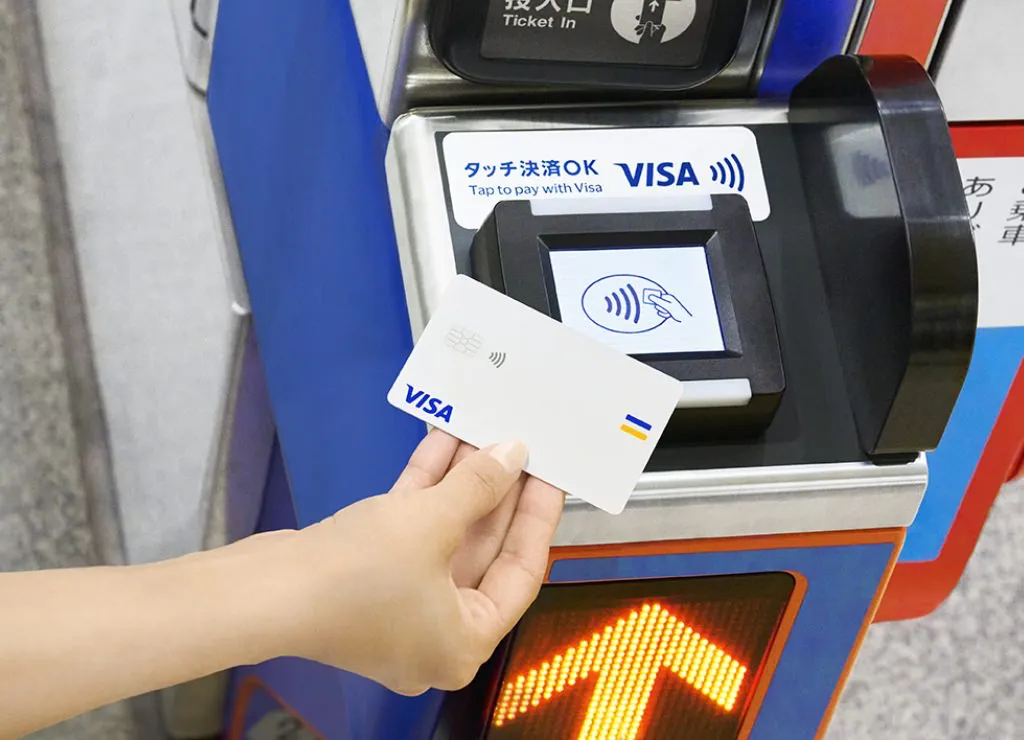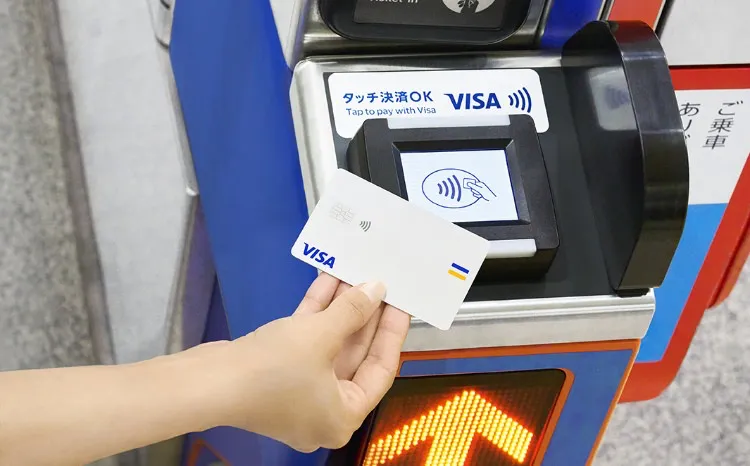The stera transit project, led by Sumitomo Mitsui Card Co., Ltd., aims to revolutionize public transportation through its contactless payment solution. Since its launch in Japan in 2020, the system has gained widespread adoption both domestically and internationally, quickly establishing itself as a new standard in transit payment technology.
This project enhances the passenger experience by enabling stress-free travel. Sumitomo Mitsui Card envisions a future where daily public transportation is made easier through the simple tap of a contactless payment.
Through stera transit, the company collaborates with transportation operators across Japan to provide a more convenient, comfortable, and accessible way to travel, while working to improve the country’s transportation infrastructure and create a more efficient future for public transit.
stera transit’s Vision of a
Transportation Innovation
and Japan’s New
Everyday Life
stera transit plays a key role in Japan’s growth strategy, particularly in promoting the country as a top tourist destination and driving regional revitalization. Masatoshi Ishizuka from the Transit Business Promotion Dept. once observed the challenges faced by tourists in Japan.
“At a local railway station, I witnessed a foreign family struggling to buy tickets from a vending machine. They first had to switch the display from Japanese to English, which took a lot of time. In the end, it took them about six minutes to complete the purchase, causing local passengers waiting behind them to miss their train.”
stera transit eliminates the hassle of using public transportation in tourist areas, providing a smooth and convenient travel experience. With this system in place, tourists no longer need to purchase new transportation IC cards or buy tickets from vending machines. Instead, they can simply tap their credit cards or smartphones for payment. By removing language barriers and simplifying processes, stera transit creates an easy, user-friendly public transportation experience for everyone.
Furthermore, stera transit technology excels in both flexibility and cost efficiency. Its cloud-based system provides seamless nationwide service while significantly reducing implementation and operational costs for transportation operators.
In Japan, transportation IC cards have been widely used nationwide since 2001. These cards operate on a system that requires users to pre-load funds, with balance and usage information stored directly on the IC chip embedded in the card. This setup necessitates specialized equipment for writing data to the chip and facilities for customer service, leading to additional implementation and operational costs for transportation operators.
In contrast, stera transit utilizes a unified, cloud-based system that spans the entire country, with user information managed in the cloud. This allows transportation operators to make full use of their existing infrastructure while significantly reducing the costs associated with adopting new technologies.


Building Partnerships with
Operators and Technology
Partners Amid the
Pandemic
The promotion of stera transit came with numerous challenges. During the planning phase from late 2018 to the first half of 2019, it was particularly difficult to gain understanding and support for contactless payments from transportation operators.
Ishizuka reflected, “One of the biggest challenges in promoting the stera transit project was helping people understand the concept, as contactless payments using credit cards were not yet widely adopted in Japan’s transportation systems.”
While persistently engaging in discussions with transportation operators, bus equipment manufacturers, and the Ministry of Land, Infrastructure, Transport and Tourism, the project also established a key partnership on the technical front. The encounter with QUADRAC Co., Ltd., a company with specialized technology for enabling contactless payments in transportation, laid the foundation for providing a seamless user experience and facilitated an early entry into the market.
Although the project successfully reached its launch, another major challenge quickly emerged: the outbreak of the COVID-19 pandemic. At the time, ongoing implementation plans had to be temporarily paused. However, with the understanding and support of many transportation operators, the project continued to move forward. Operators who had been engaged since the market research phase expressed strong commitment, saying, “Things are challenging right now, but please be patient. We will make this happen.”
Thanks to this support, they successfully launched the inaugural stera transit project in July 2020.


Revitalizing Local
Economies and
Communities Through
stera transit
One of the key roles of stera transit is solving regional challenges by using public transportation data. Ishizuka highlights its significance through the example of Kagoshima City.
“Kagoshima City is facing the issue of a declining population. To sustain and strengthen its economic foundation, it’s essential to make the most of limited resources and enhance the region’s overall appeal. The tourism industry, in particular, serves as a key pillar for the city, requiring strategic and efficient management. The introduction of stera transit and a data dashboard makes it possible to analyze detailed data, including the number of travelers, the time of day, and even the purpose of their trips. The city can guide tourists to other attractive locations when certain areas become overcrowded by using this data. This helps disperse economic activity, promoting revitalization across the entire region.”
Furthermore, Ishizuka highlights stera transit’s potential applications stating, “For example, offering fare discounts to those using public transportation for medical check-ups could help extend healthy life expectancy. This is more than just offering fare discounts. It demonstrates how public transportation can play a direct role in supporting community health initiatives.”
Through these efforts, stera transit goes beyond simply transforming transportation systems, holding the potential to solve a wide range of challenges faced by local communities.


Collaborating Within the Department to Tackle Daily Challenges
The Future of Large-Scale
Expansion for stera transit
stera transit plans to expand its services in collaboration with major operators in the Kansai and Tokyo metropolitan areas from 2024 to 2025. Specifically, the goal is to reach around 180 operators by the end of fiscal 2024, approximately 230 operators by the end of fiscal 2025, and to further expand to major railway and bus companies nationwide by around 2026. The vision is for stera transit to seamlessly integrate into everyday life across Japan.
At the heart of the stera transit project is Ishizuka’s strong belief in “making everyday life better” and “creating new ways of living.” He shares his thoughts on this important concept.
“I believe that the feeling of ‘this could be better’ in our daily lives or work is the seed of creating social value. By nurturing these seeds and turning them into business opportunities, we not only generate new value but also create a more fulfilling life for ourselves.”
Looking ahead, stera transit seeks to evolve from newsworthy innovation to an integral part of daily life. This project will enhance the quality of public transportation across Japan, providing more convenient and comfortable mobility options for many people.


